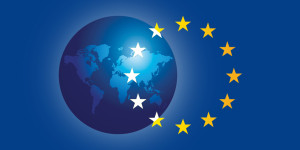The European Commission has today officially launched a new EU Strategy for the Adriatic and Ionian Region in the form of a Communication and an Action Plan, to help its 70 million residents to reap the benefit of closer cooperation in areas like promoting the maritime economy, preserving the marine environment, completing transport and energy links and boosting sustainable tourism.
The Strategy will also provide a valuable opportunity for would-be members and candidates of the EU to work alongside EU members, in particular contributing to the integration of the Western Balkans into the European Union.
This is the first EU ‘macro-regional strategy’ with such a large proportion of non-EU countries (Albania, Bosnia and Herzegovina, Montenegro and Serbia) cooperating with EU members (Croatia, Greece, Italy, and Slovenia). The Strategy mainly revolves around the opportunities of the maritime economy – ‘blue growth’, land-sea transport, energy connectivity, protecting the environment and sustainable tourism – sectors that are bound to play a crucial role in creating jobs and boosting economic growth in the region. The starting point for this is the Maritime Strategy for the Adriatic and Ionian Seas, adopted by the Commission on 30 November 2012 and now incorporated into the Strategy.
European Commissioner for Regional Policy Johannes Hahn commented: “Working together to tackle common challenges and promote shared potential makes great sense. The Adriatic Ionian will be Europe’s third macro-regional strategy. The countries involved should learn lessons from the Baltic Sea and Danube Strategies, namely the importance of focusing on a few priorities with strong political leadership, if it is to have a real impact. In a region that has seen some of Europe’s most serious recent conflicts, the Adriatic Ionian Strategy, with its cooperation between EU and non-EU neighbouring countries, could also play an important part in helping the integration of the Western Balkans into the European Union.”
Maria Damanaki, Commissioner for Maritime Affairs and Fisheries said: “The maritime challenges we face in the Adriatic and Ionian Region are not unique to any one country: from overfishing to pollution, traffic congestion, transport connections and seasonal tourism: the only way that makes sense to tackle these issues is the united, coherent way. Since there is growth potential many of these areas, the action plan for the Adriatic Ionian can help propel the region out the crisis and put its economy back on track.”
A pair of countries – one EU Member State and one non-EU country- coordinated the development of each element of the Action Plan:
1. Greece and Montenegro on “Blue Growth”,
2. Italy and Serbia on “Connecting the Region” (transport and energy networks),
3. Slovenia and Bosnia and Herzegovina on “Environmental Quality”,
4. Croatia and Albania on “Sustainable Tourism”.
In addition, capacity building as well as research, innovation and small and medium size business are cross-cutting aspects. Climate change mitigation and adaptation as well as disaster risk management are horizontal principles relevant to all four pillars.
Background
The European Council of 13-14 December 2012 requested the Commission to bring forward an EU Strategy for the Adriatic and Ionian Region before the end of 2014, building on the experiences of the Danube and Baltic Sea Regions. The newly launched Strategy takes into account the outcomes of the on-line public stakeholder consultations conducted between September 2013 and January 2014 as well as the discussions from the closing Stakeholder Conference in Athens on 6-7 February 2014. It is transmitted to the Council today and it is expected that the EU leaders in the European Council, under the Italian Presidency, will endorse the Strategy later this year.
In the 2013 evaluation report, the Commission stressed that new macro-regional strategies should focus on a limited number of well-defined objectives and that these objectives should be implemented through a clear Action Plan.
A 2014 report on the governance of macro-regional strategies has made recommendations to strengthen political leadership and ownership by the countries and stakeholders.
The EUSAIR Strategy will not come with extra EU funding, but it should mobilise and align existing EU and national financing as well as attracting private investments. In particular, the European Structural and Investment Funds (ESIF) as well as the
Instrument for Pre-accession (IPA) will contribute to the implementation of the Strategy.
Examples of indicative projects to be developed under each pillar:
1) Blue Growth
• Regular stock assessments for sustainable fisheries management
• Seeking a joint approach to the spatial planning of the region’s seas through the ADRiatic Ionian maritime spatial PLANning (ADRIPLAN)
2) Connecting the Region
• Upgrading the Adriatic Traffic Reporting System (ADRIREP)
• Improving the accessibility of the neighbouring coastal areas and islands
• Removing barriers for cross-border investments in energy networks
3) Environmental Quality
• Exchanging best practice among managing authorities through the Adriatic Protected Areas Network – AdriaPAN
• Building on the CleanSea project, further developing cost-effective management measures and policy options to keep European seas clean, healthy and productive
4) Sustainable Tourism
• Facilitating access to finance for tourism start-ups
Further information:
Communication and Action Plan on the EU Strategy for the Adriatic and Ionian Region
Towards an EU Strategy for the Adriatic and Ionian Region
Study on the Adriatic Ionian sea basin cooperation
Brochure on Blue Growth (data by country and sea basin)
Twitter: @EU_Regional @JHahnEU – @MariaDamanakiEU
#EUSAIR
Q&A on the EU Strategy for the Adriatic and Ionian Region (EUSAIR)

